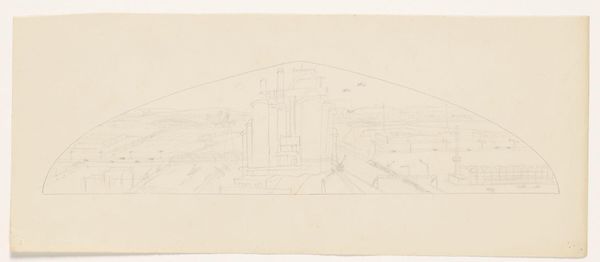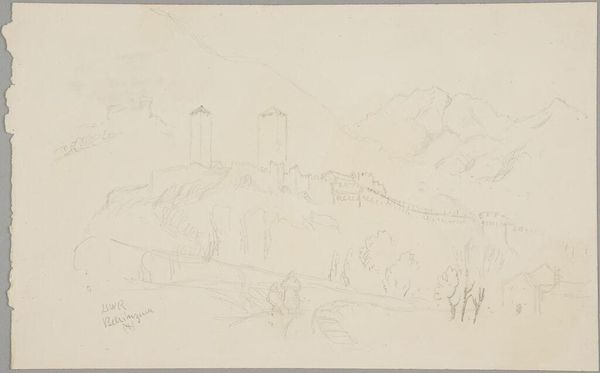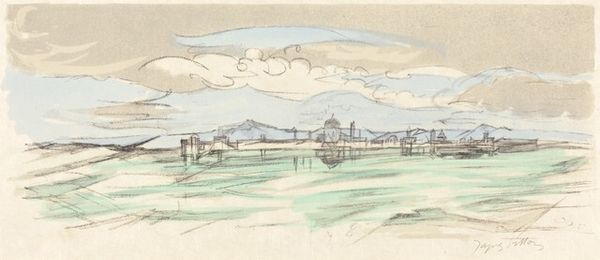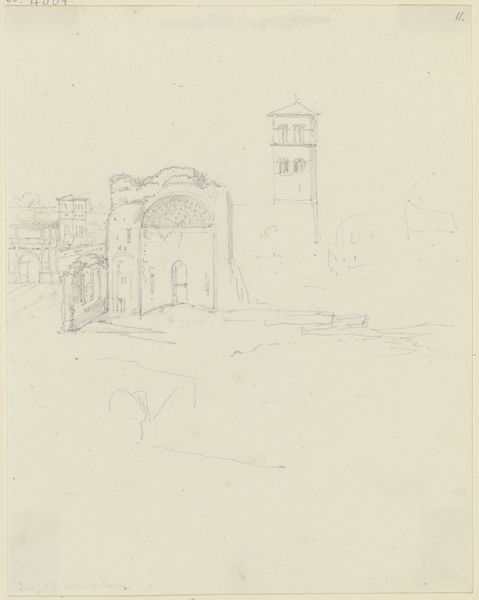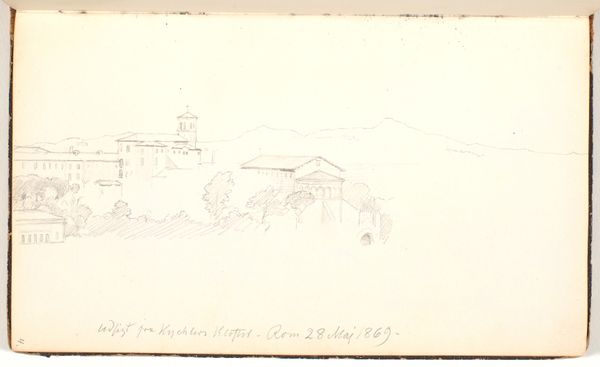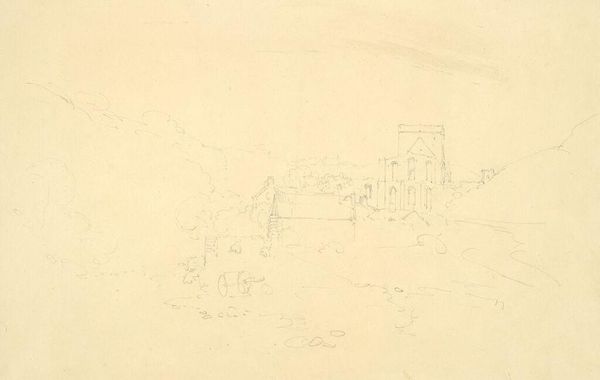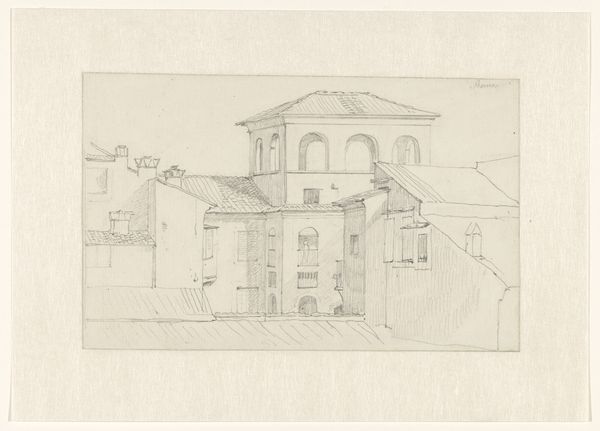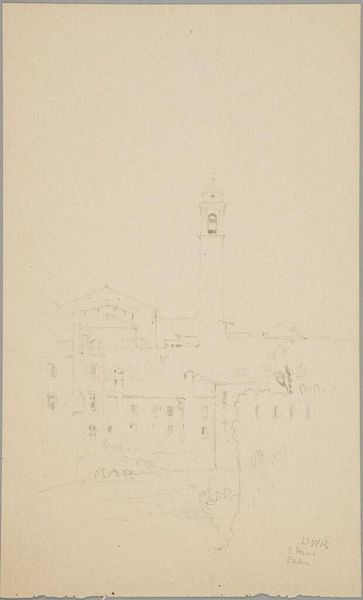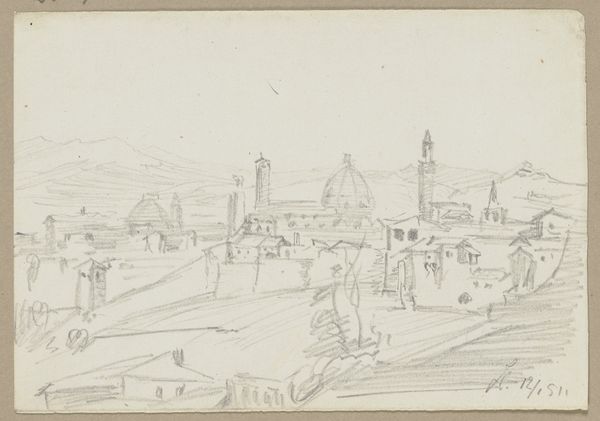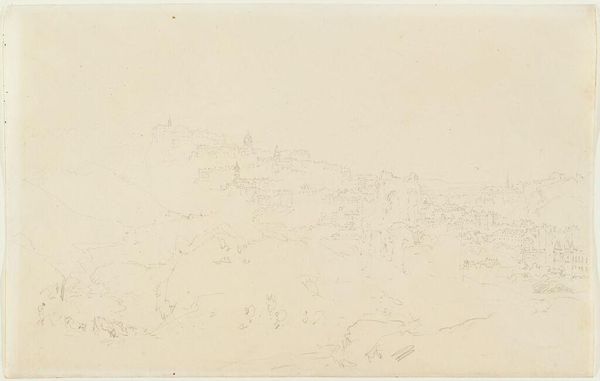
Gezicht over de daken van Perugia naar S. Pietro, links op de voorgrond S. Domenico 1825 - 1873
0:00
0:00
drawing, paper, pencil, graphite
#
drawing
#
landscape
#
etching
#
paper
#
pencil
#
graphite
#
cityscape
#
realism
Dimensions: height 145 mm, width 289 mm
Copyright: Rijks Museum: Open Domain
Curator: This drawing, dating from between 1825 and 1873, is by Pierre Louis Dubourcq. The title translates to “View Over the Roofs of Perugia Towards S. Pietro, with S. Domenico on the Left Foreground.” It's a detailed cityscape rendered in pencil, graphite, and etching on paper. Editor: Oh, it has this dreamy, ethereal quality. Almost ghostly in its rendering. Everything feels quite hushed. I wonder, what paper stock would've allowed such subtle gradients from graphite? It almost looks like it was prepared, coated in some way. Curator: The subtle gradients lend to the scale—Perugia spills out across the page. Given the likely timeframe, that paper could have been manufactured locally. I always wonder about sourcing with pieces like this; how did the materials dictate the artist's perception of the urban form? The architecture of the buildings and then the labour in the manufacture of that architecture. Editor: I suppose that also gives us an insight into travel practices, too; hauling graphite, etchings and treated paper—but this also reads as if seen through the rose-tinted glasses of nostalgia. It is Perugia, yes, but it's Perugia softened, idealized, quieted. No cobblestone dust. Curator: You're right. While ostensibly realistic in its depiction, it is filtered through personal perception, inevitably. I feel this quietude allows the spiritual presence of the cathedrals to loom larger. Did the manufacturing and access to specific artistic tools elevate or homogenize art forms within cityscapes and the romantic aesthetic? Editor: Exactly. It presents us with a window to the soul of a place and a moment – filtered, as you say. Though it gives me something to think about, how the materials affected these choices and presentations and where those came from for Dubourcq himself. Curator: In the end, the artist's choices intertwine with those of his time; those materials and what can they speak to—ultimately shaping how we now perceive a moment and location now centuries past.
Comments
No comments
Be the first to comment and join the conversation on the ultimate creative platform.
